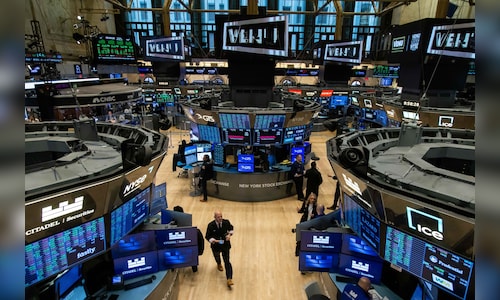| Company | Value | Change | %Change |
|---|
The Dow Jones fell 450 points, a slight recovery from the lows as at one point, the index was down nearly 700 points. The S&P 500 and the Nasdaq both shed 0.4% each.
Dow’s underperformance was led by Walmart, as shares of the retailer fell over 6.5% after its fiscal 2026 guidance missed analyst expectations. Walmart expects sales to grow between 3% to 4%.
“If Walmart is giving bad guidance, you should be paying attention to it,” said Tom Fitzpatrick, managing director at R.J. O’Brien & Associates. “Perhaps this is suggesting that the general consumer is tapped out.”
A slide in banks also weighed on the Dow, with JPMorgan Chase & Co. and Goldman Sachs Group Inc. each falling close to 4%.
Retailers like Walmart tend to perform well during tough economic times. It’s also true that Walmart usually starts the year with a conservative guidance. But the fact is consumers are dealing with stubborn prices and high borrowing costs, and many are turning to credit cards and other debt to support their spending — with a rising number of those loans starting to go bad.
Those uncertainties hit a market dealing with risks ranging from tariffs to inflation, geopolitics and valuations. After rallying over 20% last year, US stocks have trailed global counterparts — with the S&P 500 failing to achieve meaningful breakouts during the three times it closed at a record in 2025.
“A correction may soon be necessary to restore a more attractive valuation for US stocks,” said Fawad Razaqzada at City Index and Forex.com. “While there are no overt warning signs just yet, it pays to be alert to signals that would put the S&P 500 forecast on a downward trajectory in the short-term.”
The yield on 10-year Treasuries slid three basis points to 4.50%. The Bloomberg Dollar Spot Index fell 0.7%. The yen led gains in major currencies on bets the Bank of Japan will hike rates sooner rather than later.
“US equities are seeing some broader de-risking today,” said Dan Wantrobski at Janney Montgomery Scott.
While the overall consolidation pattern remains intact / healthy at this time, Wantrobski says he’s watching for key support within the 5,950-6,000 range for the S&P 500.
“A closing break below this threshold still opens the door to a bigger drawdown towards the 200-day moving average — which resides within our 5,600-5,800 support target,” he added. The gauge is currently above 6,100.
The US stock market can flip into a correction territory as retail and institutional buyers are running out of steam, according to Goldman Sachs Group Inc.’s Scott Rubner, the bank’s managing director for global markets and tactical specialist.
Demand from retail traders, which have been piling into US stocks at a record pace this year, is expected to slow down ahead of the tax paying season in March. Flows from pension funds can also “run out of juice,” according to Rubner attributing it to seasonal trends. January and February are typically the strongest months of the year for yearly asset allocations, followed by weaker inflows in March.
(With Inputs From Agencies.)


